
Roman cemetery where the number of graves uncovered exceeds thirty
As part of the reconstruction of the north-south entrance road between Sidi Mansour and Tine, a team from the National Heritage Institute carried out a rescue excavation between 03 January 2024 and 16 March 2024. The results revealed a Roman cemetery with more than thirty graves and a Roman house whose floor was tiled with mosaics of geometric shapes. These two monuments date back to the period between the second and fourth centuries AD.
The aim of this excavation is to study, document and preserve what has been discovered on this archaeological site. In this context, the mosaic was removed by the Sfax mosaic conservation team and the tomb with Latin decorations and inscriptions was removed by the team from the Institute’s Centre Centre for Heritage Science and Techniques.
The team that helped with the excavations was made up of a group of heritage conservators from the National Heritage Institute and students from the University of Sfax. The work was carried out in coordination with the Direction Générale des Ponts et Chaussées of the Ministère de l’Equipement et de l’Habitat.
The Hr El Begar olive complex
Under the direction of Professors Samira Sehili for the INP and Fabiola Sancedo Sanchez for the University of Madrid, the campaign from September 25 to October 10 is aimed at studying the olive complex at Hr El Begar.
The discovery of an exceptional inscription (in two copies): the senatus consulte of 138 AD, which authorized the owner of the Saltus Beguensis estate, Lucilius Africanus, to organize a fortnightly market.
Prospecting revealed the presence of a major olive complex measuring 532+772 m2, comprising an oil mill with twelve pairs of b-hole twins – the largest olive complex in ancient Africa and the Roman world, after Tripolitania. It also contains a large cylindrical basin measuring 60m in diameter, and several structures scattered throughout the site, which covers an area of around 19ha.The second site, at Hr el Begar, covers an area of around 15ha and contains a fortified mausoleum, a large olive-growing complex and a basin measuring 50m in diameter. An enhancement project is also planned.
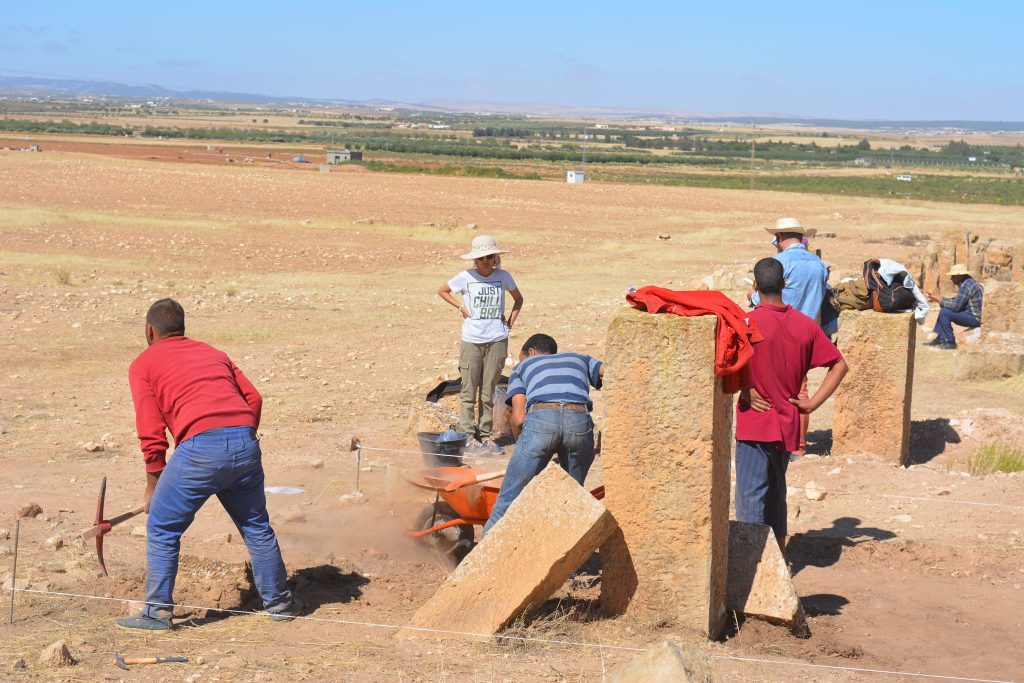 |
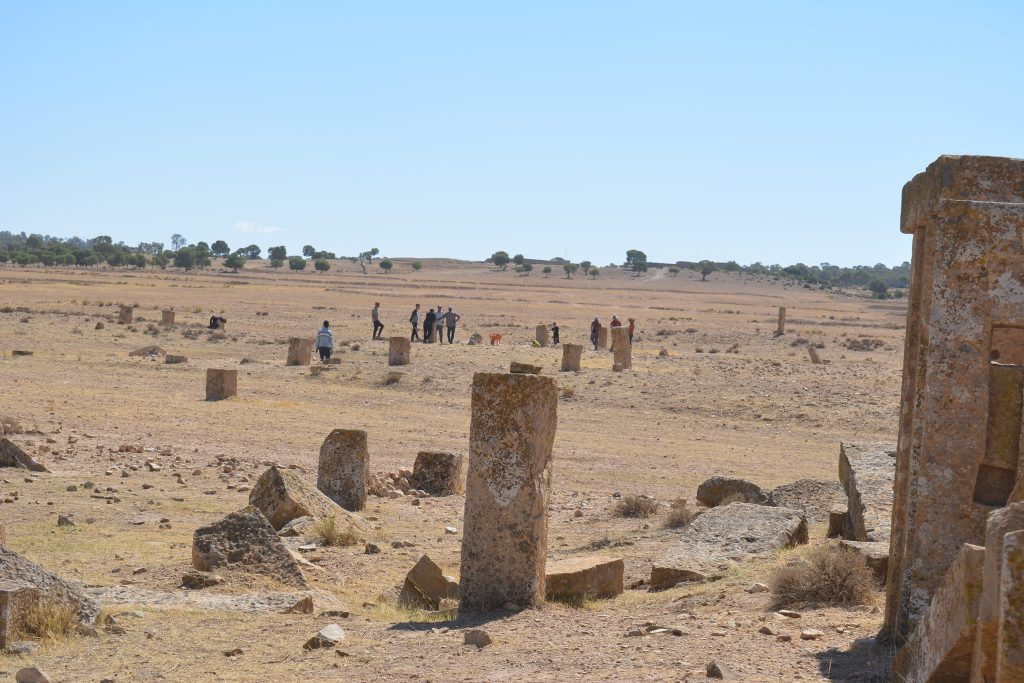 |
Rescue excavation at the Bichni site, Kébili
First day of the rescue excavation at the Bichni site, Kébili governorate. The work will last a week from October 16 to 22, 2023, with the participation of curators from the Douz Museum. The site contains a square-shaped basin, and several structures have been identified near the marabout of Sidi Ali ben Slimen.
 |
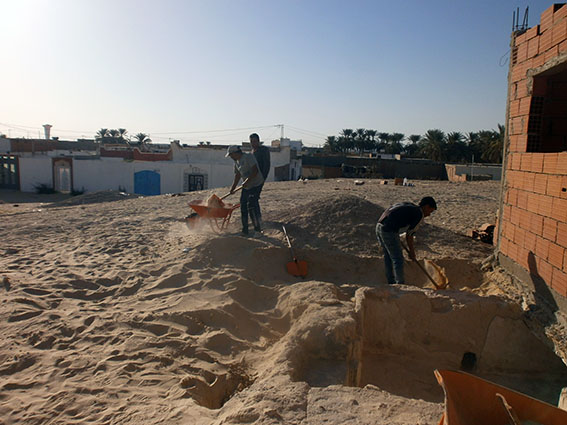 |
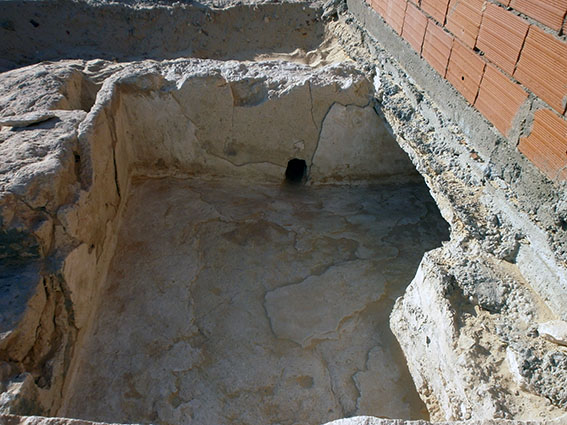 |
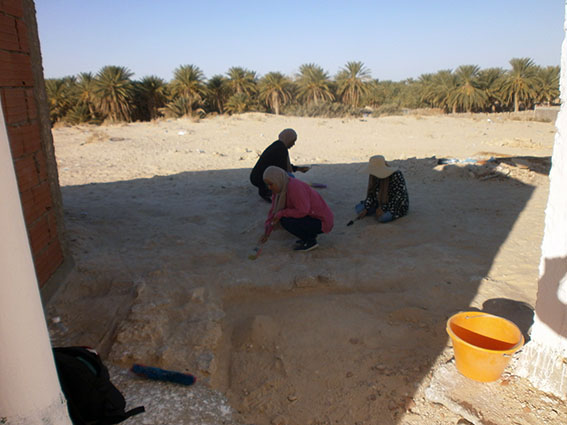 |
Fouille de sauvetage dans le site de Bichni, Kébili
Première journée de la fouille du sauvetage effectuée dans le site de Bichni, gouvernorat de Kébili. Le travail va durer une semaine du 16 au 22 octobre 2023 avec la participation des conservateurs du musée de Douz. Le site renferme un bassin de forme carré de 2m de diamètre et plusieurs structures ont été identifiées auprès de marabout de Sidi Ali ben Slimen.
 |
 |
 |
 |
The site of Carthage: a Tunisian-Italian archaeological mission
As part of the Tunisian-Italian cooperation project between the National Heritage Institute and the University of Calabria, an archaeological mission took place from January 09 to 20, 2023 on the site of Carthage at the level of the amphitheater and its surroundings, in the baths of the insula X. This mission was co-directed by Dr. Hamden Ben Romdhane and prof. The research teams were composed of Dr. Romdhan Haddad and the doctoral students Afef Rihai, Maha Bannour and Aida Zaddem on the Tunisian side and Dr. Lorenzo Zurla, Dr. Dominique Di Caro, Dr. Stefania Fornaro, Dr. Salvo Micciché on the Italian side.
Archaeological excavations, penetrating radar investigations and geo-archaeological analyses of building materials were carried out on the above-mentioned sites. These investigations have uncovered the remains of a thermal building, probably built in the fourth century AD with several subsequent phases of occupation and one of the spaces is paved in monochrome mosaic. Geo-radar and geo-archaeological investigations were also conducted in the remains of the baths and inside the amphitheater in collaboration with the Universities of La Manouba and Bizerte (Tunisia).
Photo credits: Amphitheatre Project of Carthage-INP-Univ. Calabria (Salvo Micciché and Hamden Ben Romdhane)
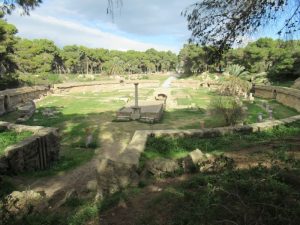 Overall view |
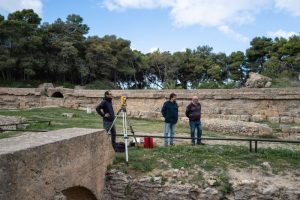 Topography |
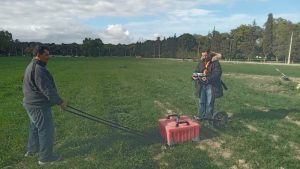 Georadar |
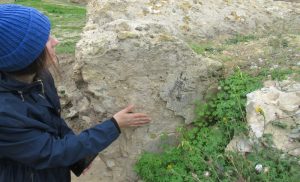 Geology |
|
Excavation |
|
Gabes new archaeological discovery
According to excavations supervised by the National Heritage Institute in the Sidi El Mahdi district of the city, Gabes, the remains of a wall and a tiled floor belonging to a Roman public monument were discovered, which is likely to be a temple. This discovery is of great importance, as it is considered one of the few archaeological testimonies of the city of Gabes mentioned in many sources of antiquity, of which very little is known.
The excavations are led by researchers Ali Drine and Sami Ben Taher, with the participation of other researchers and heritage curators from the region.
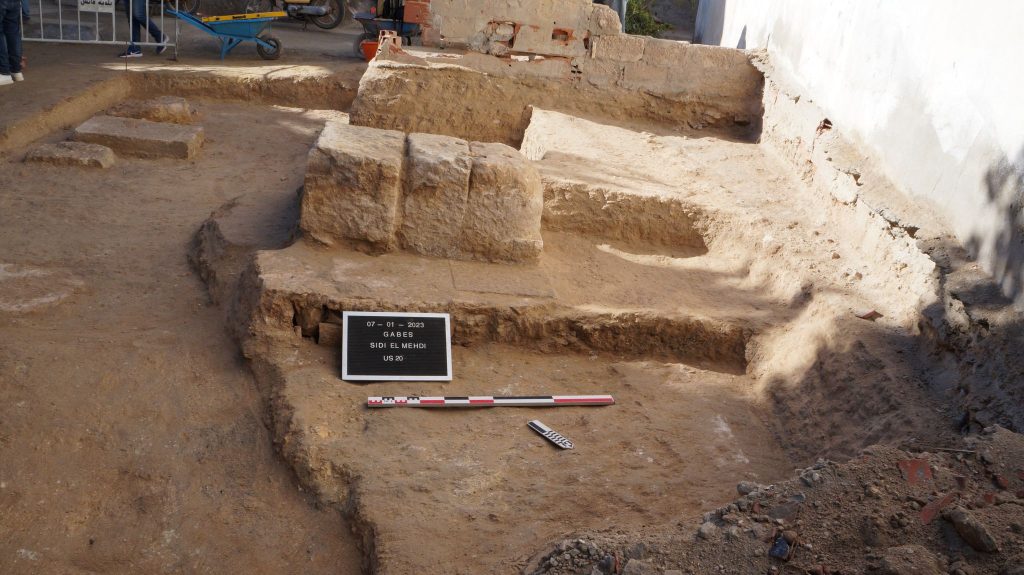
/>
Siliana Rescue excavations
On December 22, 2022, the National Heritage Institute completed the rescue excavations at Ramadiyeh Damous in Bargou, Siliana. The excavations resulted in the discovery of human and animal bone remains and important stone tools that will constitute an important turning point in the understanding of funerary rituals and the relationship between man and his external environment.
The field work was carried out by ladies and gentlemen. Rached Jabli, Ziyed El-Abdali, Basma Abdallah, Faisal Dhaifallah, Mahbouba Chennaoui, Mesbah Mabrouki, Taoufic Hamzaoui, Kais Trabelsi and Iman Kanzari and supervised by Mrs. Nabiha Aoudi, director of research and head of the prehistoric department at the National Institute of Heritage

Ziane, Zita, delegation of Zarzis
As part of the development of the public square of the Forum and the Capitol, in the ancient site of Ziane Zita, delegation of Zarzis, governorate of Medenine, a team of the National Heritage Institute was able to highlight important parts of the entrance to the Capitol and the discovery of the floor of the square tiled with limestone. These elements were covered with dust and many plants. This work also allowed the discovery of parts of the architectural elements that adorned this monument, such as columns and capitals of Ionic and Corinthian type columns.
The work was completed on Wednesday 28 December 2022.
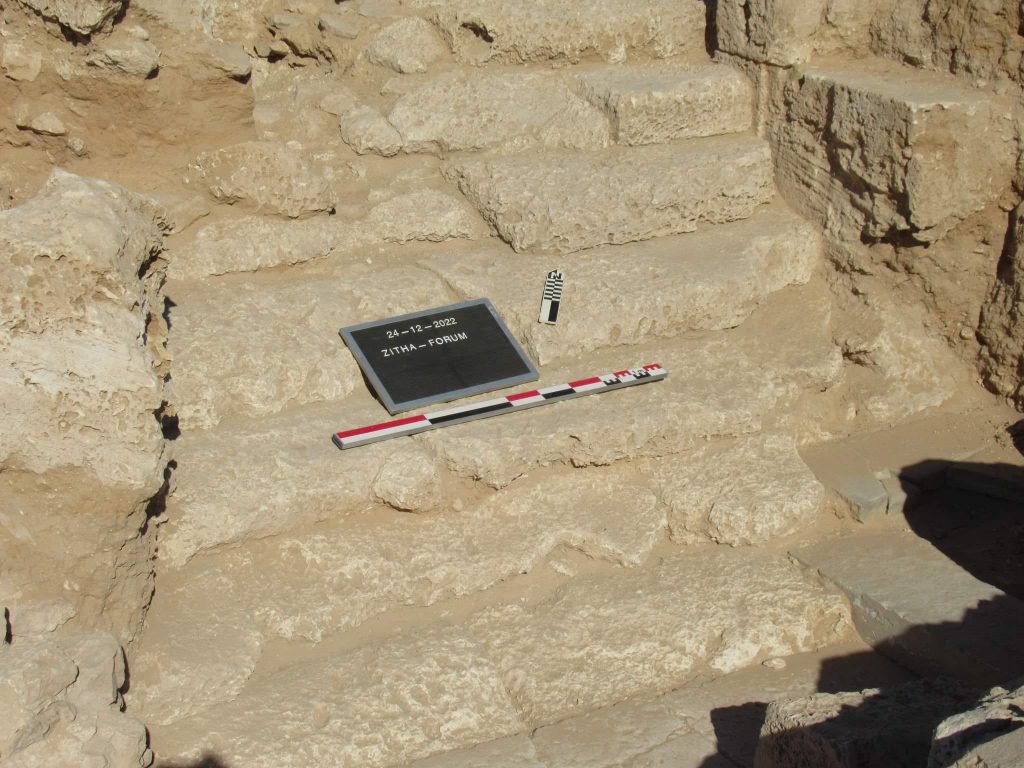
Ben Arous: new archaeological discovery
The construction of a cultural complex in the church of Radès was suspended following a spontaneous discovery of archaeological remains of several Roman cisterns, likely to have been part of the monuments of the Roman city of Maxula.
On December 19, 2022, in the governorate of Ben Arous, a team from the National Institute of Heritage embarked on a rescue excavation, under the supervision of researcher Nizar Ben Slimane and two heritage adviser curators Lassaad Zamzmi and Amina Ferjani.
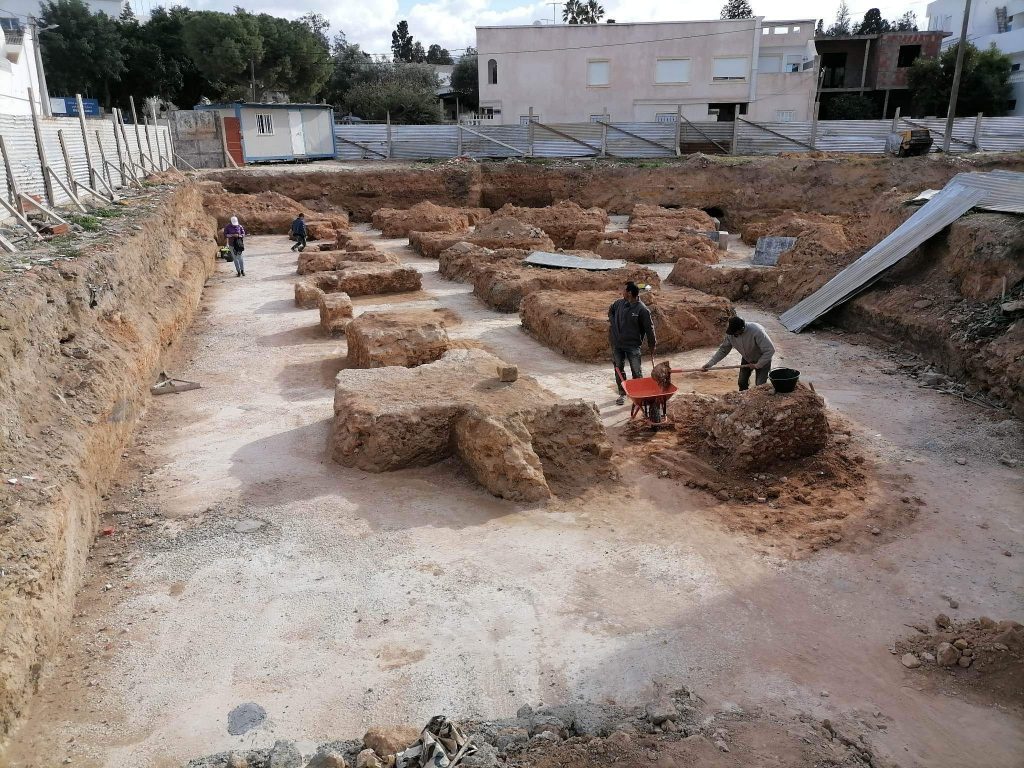
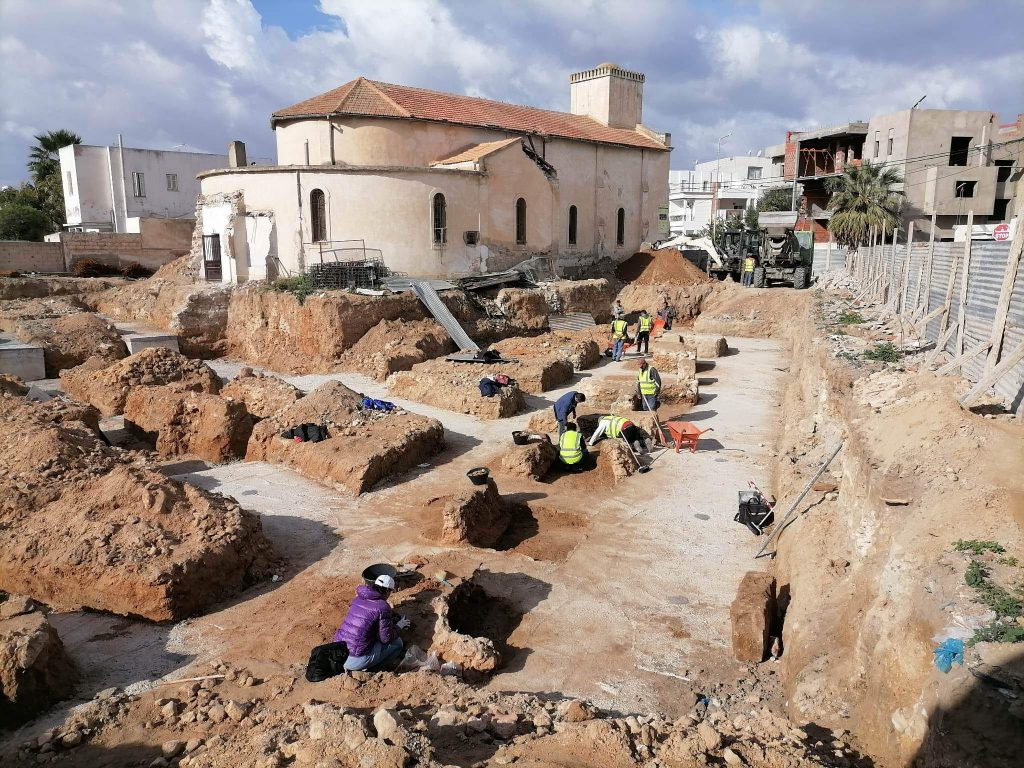
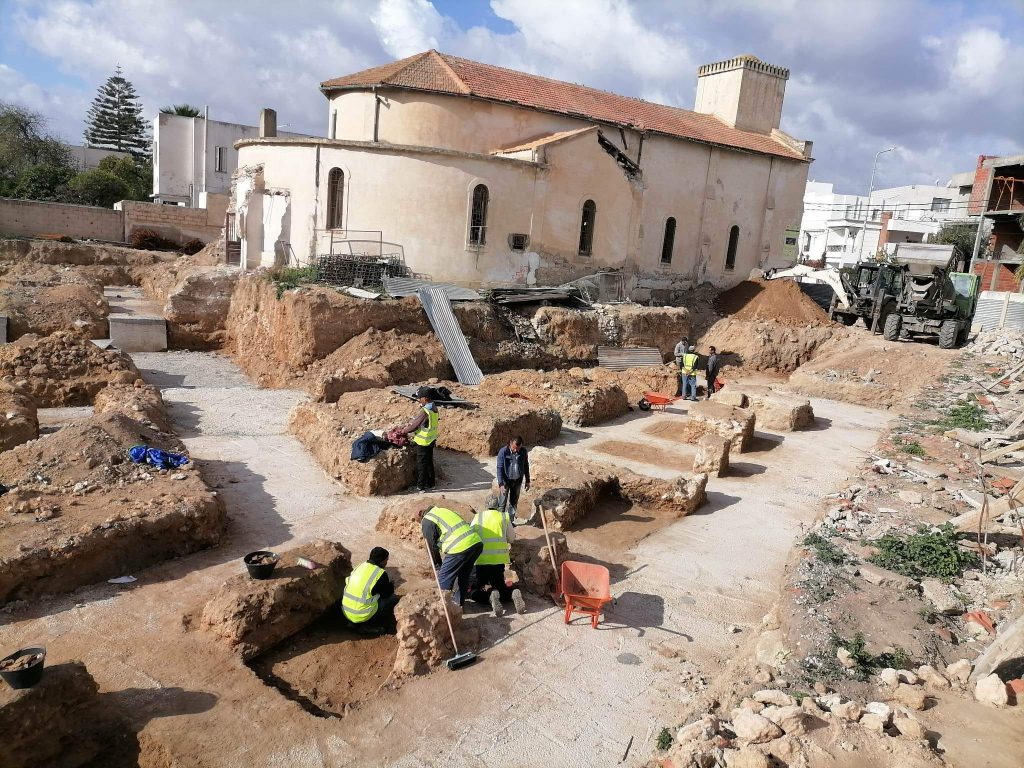
Monastir : New archaeological discovery
November 2022
Within the framework of monitoring the construction works carried out in the integrated tourist area of Skanes, Monastir, researcher Hajar Karimi, accompanied by a team of heritage curators and workers, embarked on a salvage excavation, after which an important and unique archaeological discovery was recorded.
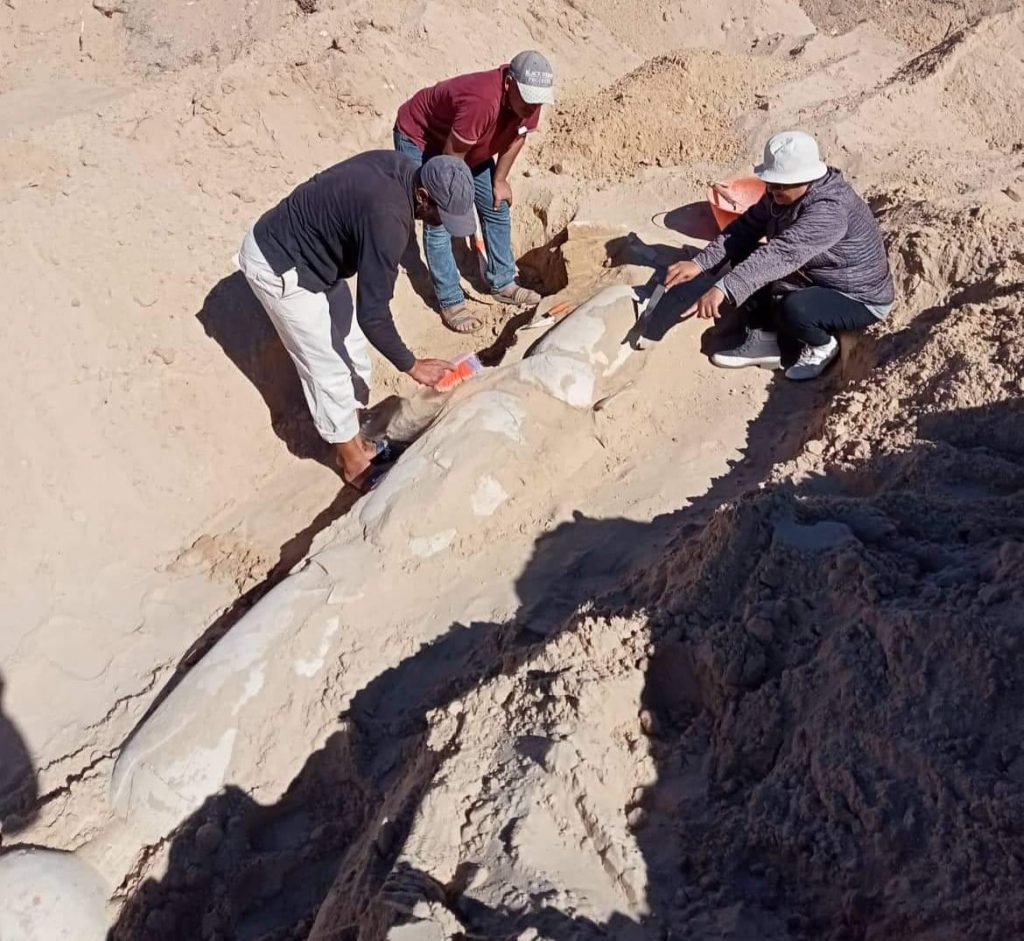
Monastir :New archaeological discovery
The discovery is represented in archaeological walls exceeding 1.50 meters high, belonging to a facility whose nature has not yet been determined. Pottery artifacts were also found, represented by lamps and daily use tools, all of which date back to the late Roman-Christian period (the Byzantine period).

Monastir :New archaeological discovery
Also, a group of jars were found in a state of medium preservation, placed in a sequential manner, one after the other. The nature of the facility is currently being investigated. The excavation is still going on.
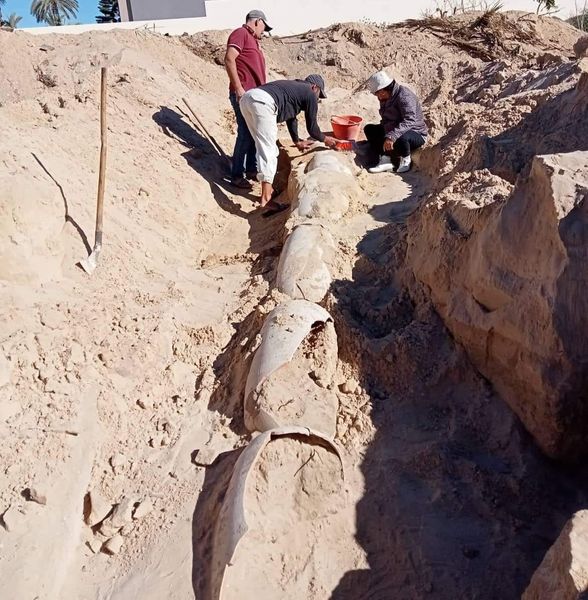
Monastir :New archaeological discovery
Souar archaeological site in the eyes of its inhabitants
Within the framework of the International Scientific Cooperation Project between the National Heritage Institute of Tunisia and the Austrian Archaeological Institute at the Austrian Academy of Sciences in Wien, and supported by the Austrian Embassy in Tunis, the joint group undertook anthropological research about the relationship between the inhabitants of the Souar region (Nadhour, delegate of Zaghouan) and the archeological site (Abthugnos) and their aspirations for local development.
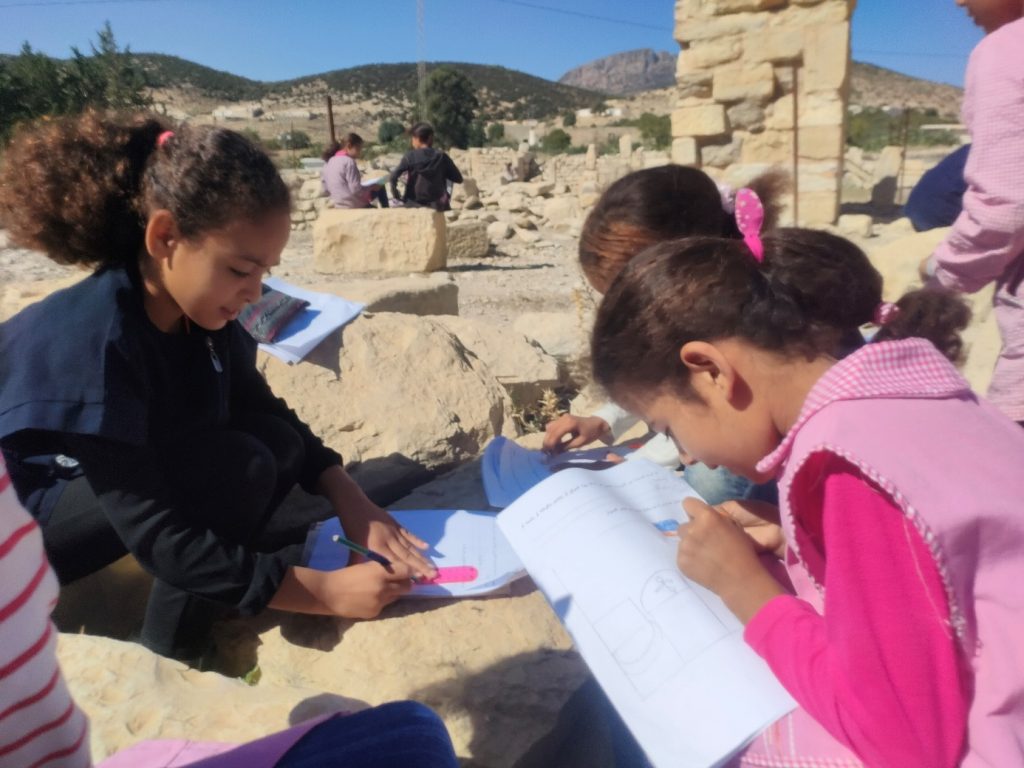
The study is part of a three- stage project that aims to strengthen the link between the local population and the Souar site in order, to lay the groundwork for a participatory strategy in the areas of protection and rehabilitation.
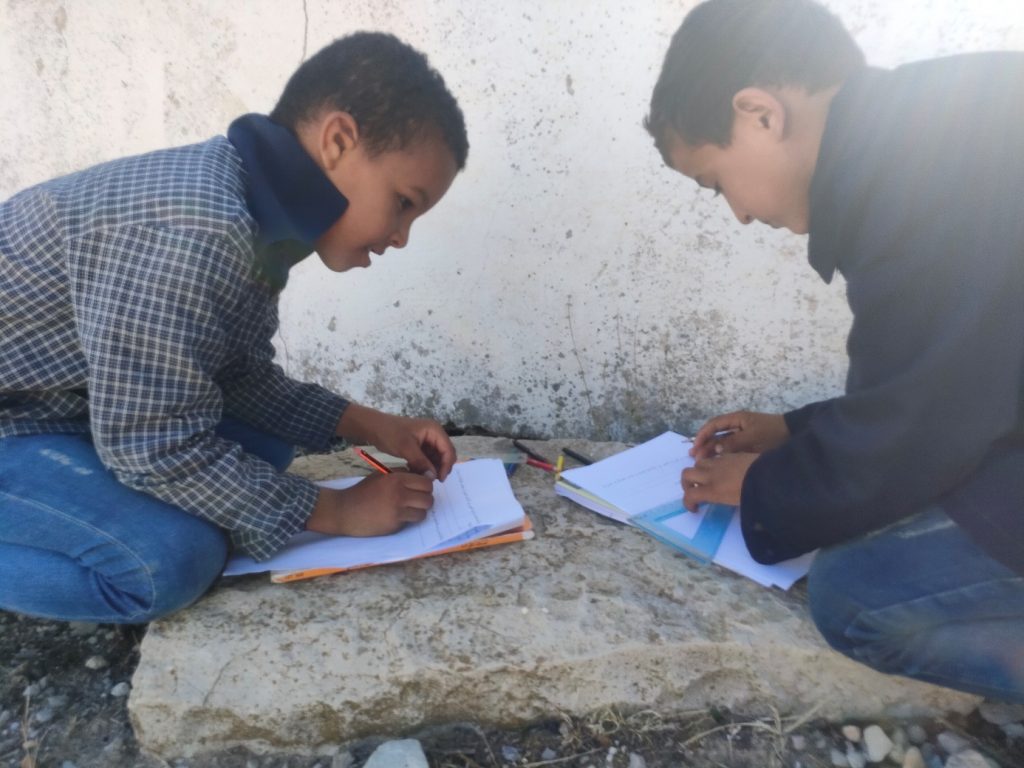
This project takes place in partnership with the Nadhour Cultural Association, that links the public institutions and the diverse components of civil society in the village of Souar.
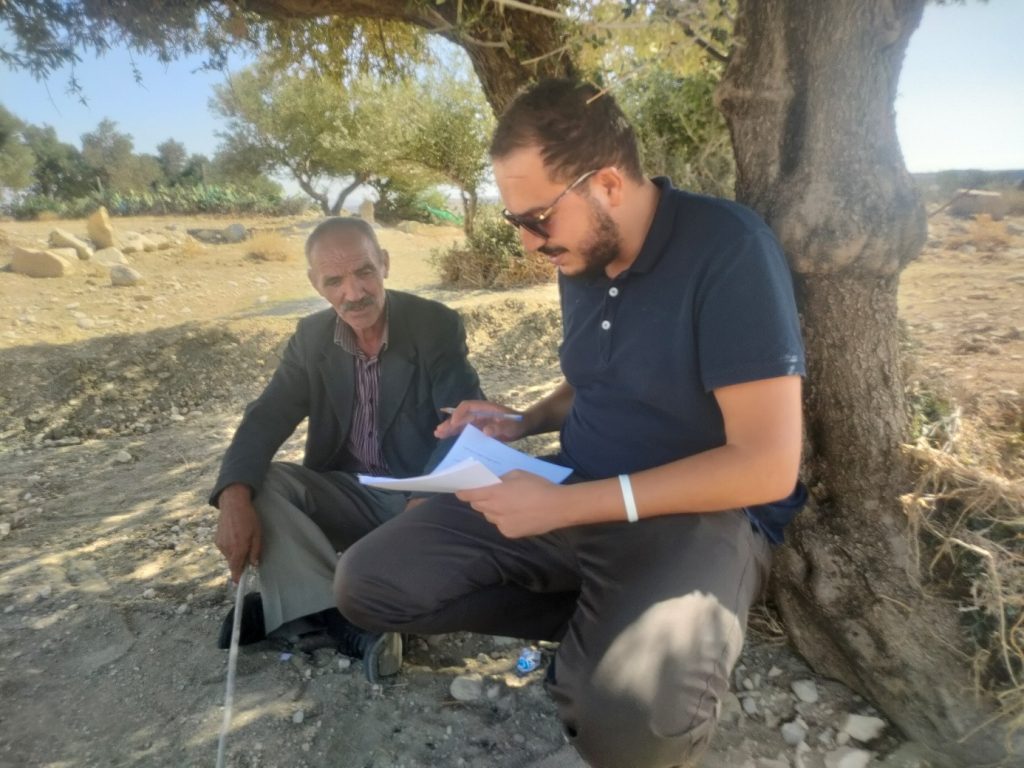
Archaeological surveys on the site of Sidi Zin, Kef
July 2022
As part of a partnership agreement between the National Heritage Institute and the National Museum of Natural History of France and the Geomorphology Laboratory of the Faculty of Human and Social Sciences of Tunis, a research team composed of the researcher Nabiha Awadi, Lotfi Balhouchat, Mrs. Islam Ben Arous, Mr. Rashid Jabli, and Mr. Qais Trabelsi, and Mr. Mosbah Mabrouki carried out archaeological surveys in the prehistoric site “Sidi Zine” in the Kef region, which dates back to the Paleolithic period (the Acheulean civilization and Mousterian civilization).

Rescue search – Al-Arbas Site
Research project at the Avitta Bibba site
The National Heritage Institute has resumed an archaeological research project on the site of Avitta Bibba, delegation of Bourada, governorate of Siliana, under the direction of researchers Mohammed Ben Najma, Chokri Touihri, Yamen Saghier
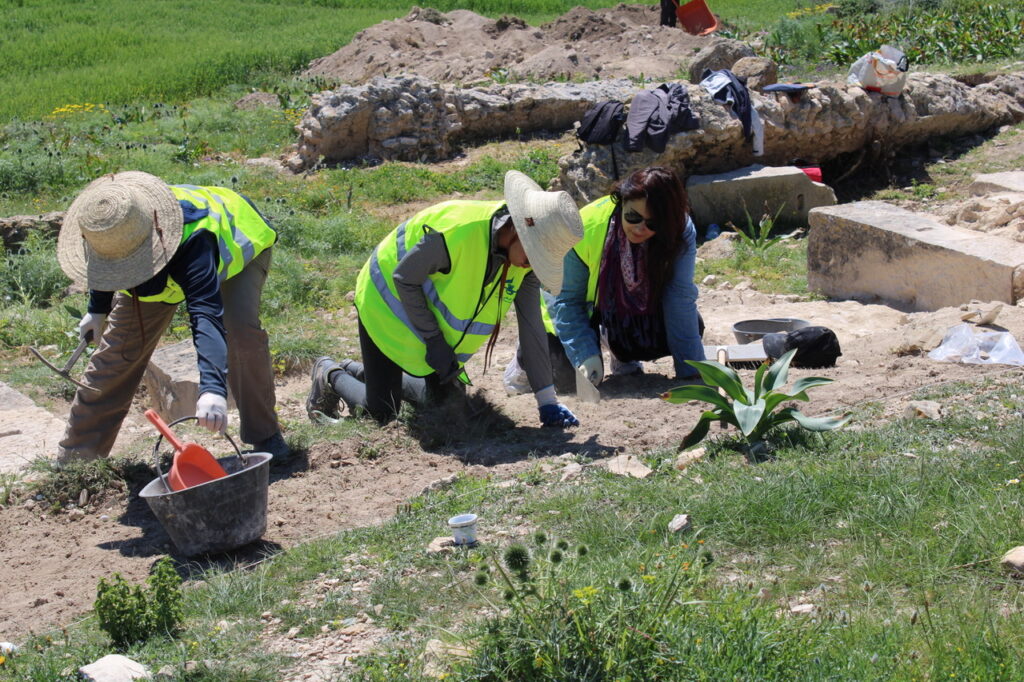
Zaghouan – Large ancient farm discovered on the route of the future Tunis-Jelma highway
Multidisciplinary teams from the National Heritage Institute, led by Hamden Ben Romdhane, researcher, have just completed a preventive research project on the Hr Ourazla site in the Nadhour delegation (Zaghouan governorate).
This research, carried out over two years (March 2019 – March 2021), included both excavation and geophysical and pedestrian prospecting with GPS location of the finds on the surface.
The result is a large farm of 1000 m2, which was continuously occupied from the end of the 2nd century to the beginning of the 7th century AD.

Rescue excavations at the archaeological site of Sejja, Siliana – South delegation, Siliana Governorate: February-March 2021
Following acts of demolition using a Bulldozer, the services of the National Heritage Institute in the governorate of Siliana intervened (and still are) to carry out a rescue excavation on the archaeological site of ” Sejja “in Siliana Sud,
http://www.inp2020.tn/en/activites-de-linp/_fouille_sauvetage_site_archeologique_sejja/
Borj el Amri, site Henchir el Messadine (Furnos Minus)
September 2020, Manouba Governorate.
A research team under the supervision of researcher Monia Adili, during its field visit to certain archaeological site of Henchir el Messadine, the ancient Furnos Minus, was discover a Roman mosaic pavement and a collection of coins dating from the late antique period. The work continued with a rescue excavation, pending the publication of the historical and archaeological data of these important discoveries.
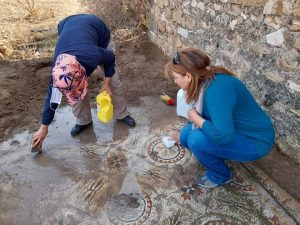
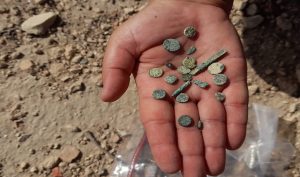
Dekhila region, Tébourba
The Archaeological prospecting work carried out by researcher Monia Adili in the Dekhila area of the Tébourba delegation has led to the identification of a funerary site dating from the dawn of history and containing a room carved into the rock and a significant number of megalithic constructions surrounded by stones and walls with a thickness of about one meter and extending over tens of meters; This work continues to identify the rest of the components of the site and its specificities.
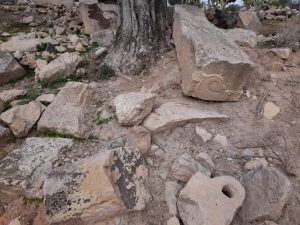
Project “the city of Agger and jebel Serj in antiquity”.
Scientific research was launched on October 03, 2020, as part of the scientific cooperation project linking the National Institute of Heritage to the research laboratory “Land Occupation, Population and Ways of Life in the ancient and medieval Maghreb (Faculty of Letters and Human Sciences of Sousse).
This project concerns the study of the ancient city of Agger (Sidi Amara, Ouesslatia delegation, Kairouan governorate) and the various archaeological sites located within the limits of the 1: 50,000th topographic map of Jebel Serj. This region is known for a significant human presence throughout history, and the study of traces of this presence has contributed to the development of our knowledge of the human way of life during prehistory and protohistory as well as of the strategic importance of the region during the Byzantine period and the High Middle Ages.
The team for this project is made up of several researchers, teachers and technicians with the coordination of Faouzi Abdellaoui (assistant professor at the University of Kairouan and member of the Land Occupation Laboratory) and Hamden Ben Romdhane (research officer at the INP). This project benefits from the scientific direction of Mm Leila Ladjimi Sebai (research director at the INP and former scientific manager of the Agger site) and Mr. Abedellatif Mrabet, Professor at the University of Sousse and director of the “occupation du ground… “
Fieldwork and study will continue until 2022 with the main objective of providing archaeological and architectural documentation of the various sites in addition to historical studies which will allow a better knowledge of this important cultural and natural reserve.
 |
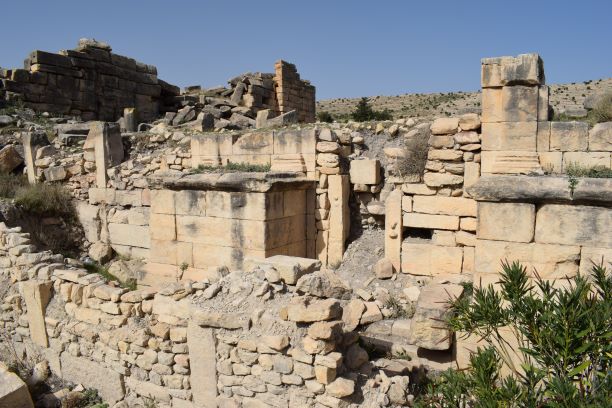 |
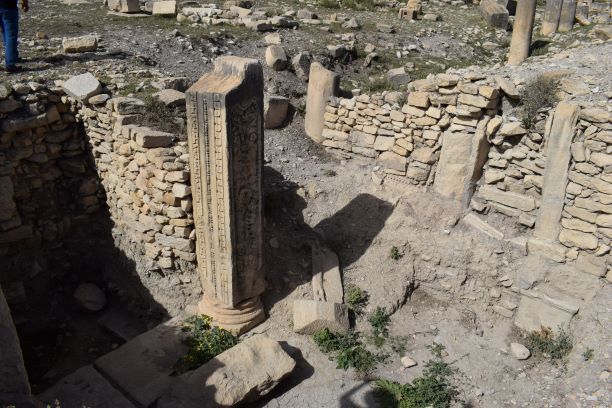 |
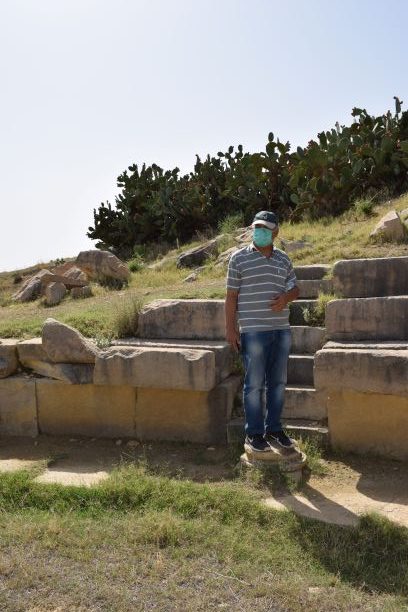 |
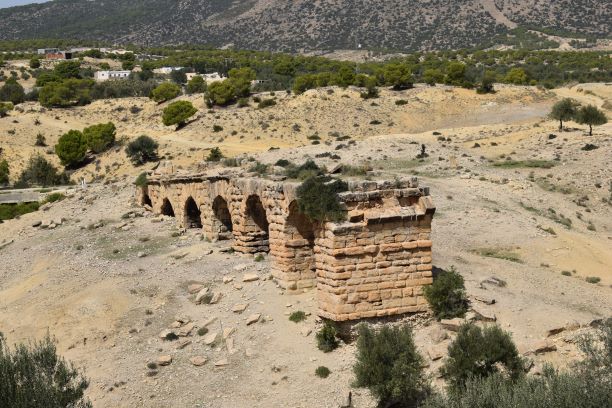 |
 |
Discovery of two ancient rural farms in Tunisia
Two sites have revealed their secrets following the discovery of two large rural farms dating back to antiquity. The first was at Hr Ourazla (Nadhur delegation) and the second at Hr Tella (Zaghouan delegation). The two sites belong to two different farming areas. Indeed, according to the archaeological material collected during the excavations, the first site is related to the Byzacene culture and its occupation does not go back beyond the Roman period, while the second is in the heart of the Carthaginian territory and dates back to the 5th century BC. Each of the two monuments covers about 1000 m2 and preserves most of its planimetry with facilities related to olive growing and domestic activities (basins, counterweights, millstones … etc). The two farms, whose occupation had ended with the Arab conquest, have only preserved the levels of the foundations built on rocky outcrops.
These archaeological interventions undertaken since March 2019 and scheduled following geophysical surveys, are the work of a scientific and technical team of the National Heritage Institute led by Samir Aounallah, director of research, Sami Ben Taher, research master and Hamden Ben Romdhane, research officer.
Excavation team (heritage curators, topographers, architectural technicians and students): Afef Riahi, Hssyne Arfa, Myriam Mahmoudi, Hosni Ben Mohamed, Saber Henchiri, Slim Bechrifia, Emna Azouz, Nabil Belmabrouk, Ridha Kooli, Kais Trabelsi, Yahya Khemiri, Abir Daadaa and Sabrine Mfarej.
 |
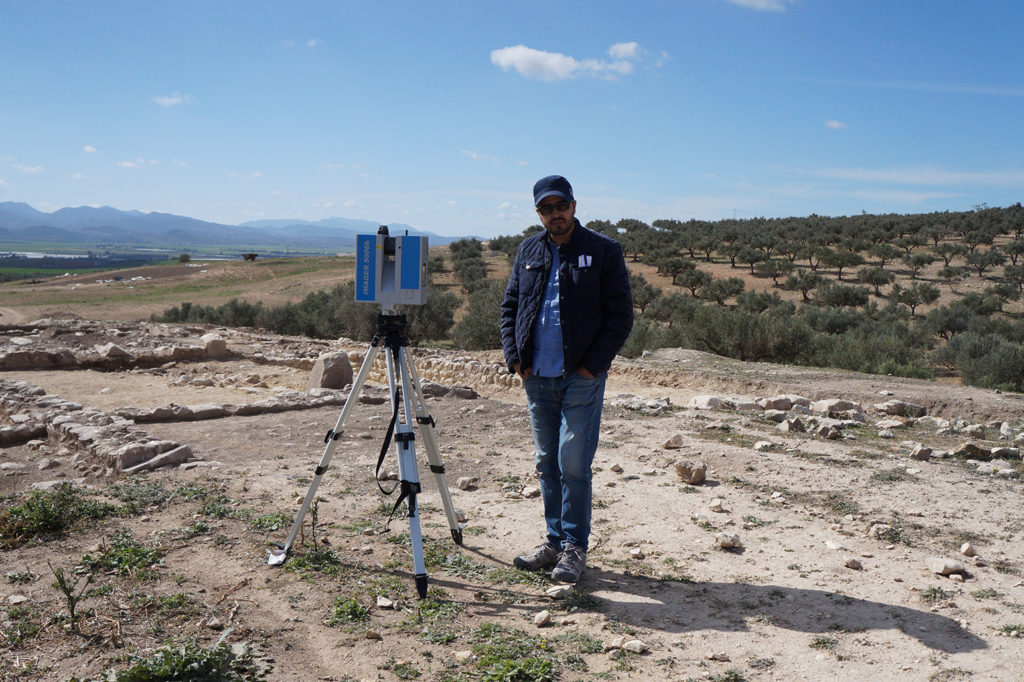 |
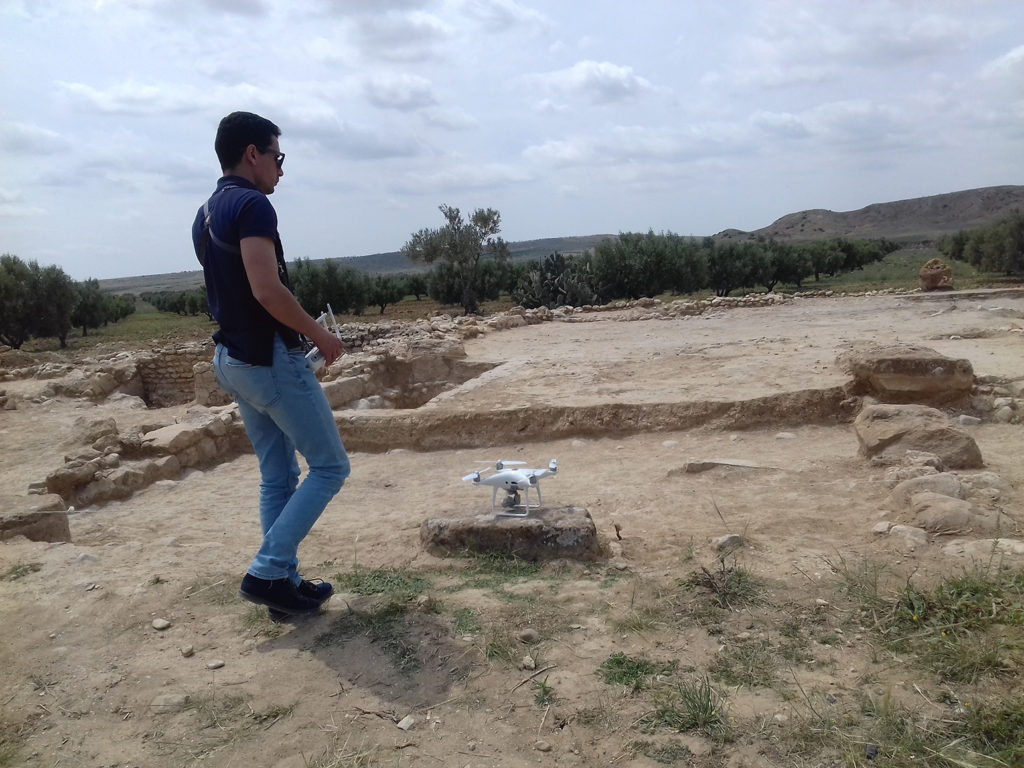 |
Cooperation project between the National Heritage Institute and the DAI ROME: Jouggar project (Zaghouan governorate)
Project Coordinators: Hamden Ben Romdhane and Ralf BockMann
Laser scanner and photogrammetric survey
The INP (Institut National du Patrimoine) in Tunis and the DAI – Deutsches Archaologisches Institut (German Archaeological Institute) in Rome have been conducting a project to study the archaeological site of Jouggar, Tunisia, since 2018.
In 2019, an integrated laser scanner and photogrammetric survey was carried out in order to obtain three-dimensional ultra-high resolution artefacts.
The site consists of an external part, a Byzantine fortress and an underground part, a Roman nymphaeum.
The external part is acquired by laser scanner and photogrammetry both terrestrial and drone.
For the internal part, the laser survey is integrated with a very high resolution photogrammetric survey carried out downstream of the installation of a light lighting set.
The result is a highly detailed point cloud and an extremely resolute 3D model.
Products
- point cloud
- navigable 3D model
- very high resolution orthophoto
- immersive virtual tour
Visit the project page via this link and see the results of the laser scanner of Jouggar’s fortress and nymphaeum: https://www.acas3d.com/sito-archeologico-di-jouggar-tunisia/
Historical information (R. Bockmann and H. Ben Romdhane)
Jougar is located on the slopes of a 370 m high mountain range, where the Ain Jougar spring originates. It is located 15 km south of Thuburbo Maius and 90 km from Carthage. According to current knowledge, the water from this spring was collected in the monumental Nymphaeum from the Severian period onwards and was fed into the aqueduct of Zaghouan, which supplied water to the ancient city of Carthage through a pipe with a total length of 128 km. During the Byzantine period, in the 6th century AD, the Nymphaeum was secured by a fortress, which was restored in the Middle Ages and the 19th century. This aqueduct continues to be functional to this day and is included with the entire Zaghouan-Carthage complex in the UNESCO World Heritage List.

